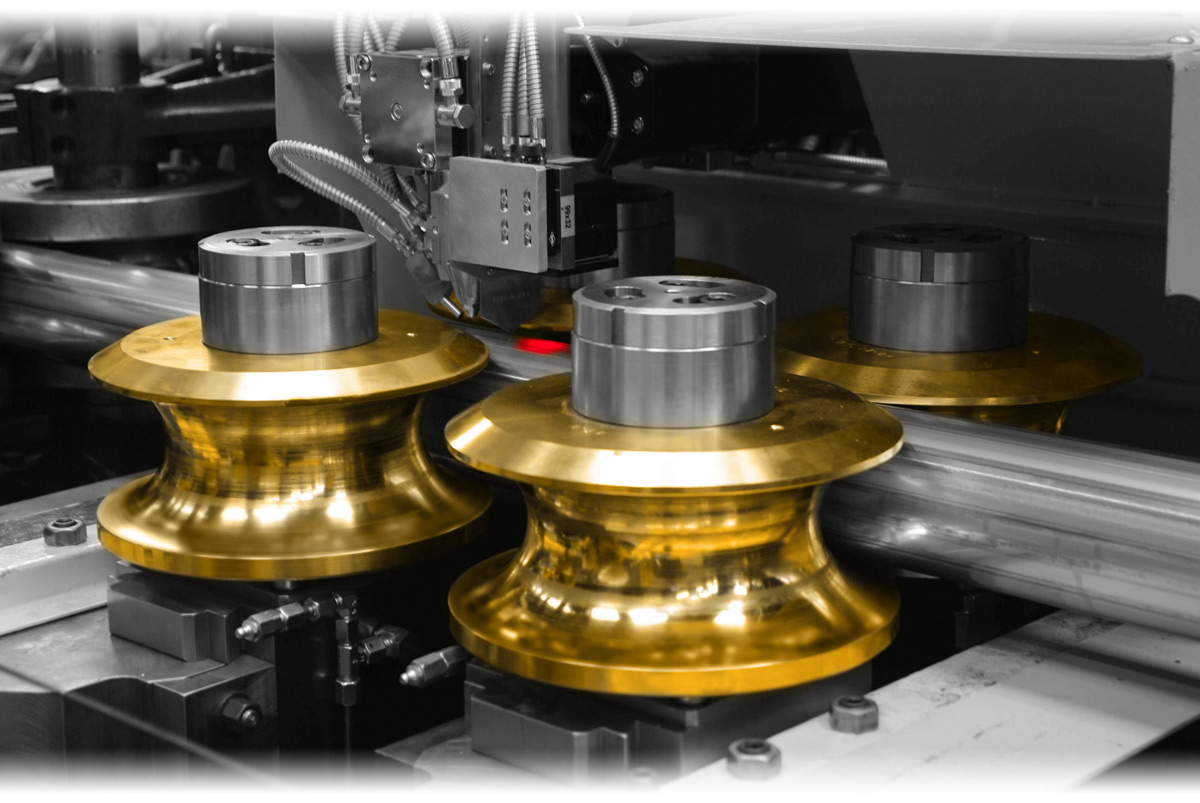Tubes are used in various industries. Compared to pipes, they are often subject to precise guidelines and thus are used in structural applications such as metal scaffolding, medical devices, and the automotive industry. But how is a tube actually formed?
Ever wondered how a flat piece of metal sheet is formed into closed tubular sections? What might sound like a very challenging endeavor is not all that difficult with some expertise, experience, and last but not least the right tools or rather tooling material. Because the challenging part of forming a stiff piece of metal sheet demands a lot from the materials used. But before we get down into detail, let’s first take a look at the process of roll forming.
The process of roll forming
Roll forming is a simple yet efficient metal forming process, ideal for even the most complex shapes. The process involves a roll forming mill and starts at the coil feeder, where material – typically coiled steel – enters the line. Some applications require a pre-piercing operation prior to being roll-formed. Subsequently, the strip of sheet metal is passed through a set of forming rolls. Each forming roll only bends small parts of the bend until the final shape is obtained. This progressively shaping method prevents springback from occurring.
 Image: schematic illustration of the roll forming process
Image: schematic illustration of the roll forming process
Depending on the requirements that a product has to meet, roll forming mills can be up to 100 meters long. Roughly at the middle of the roll forming mill, a welding station is used to permanently join the two endings of the sheet metal together, so that the tube is closed. Compared to tube bending, tube forming or roll forming allows smaller radii. Furthermore, metal thickness does not change significantly except for a slight thinning at the bend radii. The process of roll forming is used to form a wide variety of cross-section profiles. Even though an open profile is most common, closed tube shapes can be crafted as well.
Important tools for roll forming
The most important tools are of course the forming rolls. These are precision-contoured metal dies that shape the incoming piece of sheet metal. Depending on the complexity of the end product, they may be very simple cylindrical rolls. But they can also have very complicated shapes. As these forming rolls are bending the sheet strip into a tube by high pressure, they need to have a high pressure resistance. Additionally, good sliding properties and wear resistance are a must.
 Image: Forming roll made of AMPCO® 25
Image: Forming roll made of AMPCO® 25
Welding rolls ensure that the ends of the original flat piece of metal are firmly welded together. They are pressed onto the tube during the welding operation. Multiple welding operations can be chosen: high-frequency induction welding (HFI), laser welding, or TIG welding. Depending on the welding operation, different properties are needed. In general, good sliding properties and high wear resistance are advantageous.
Advantages of aluminum bronze as a tooling material
When it comes to forming rolls, aluminum bronze is a perfect match as a tooling material because they combine good sliding properties, high hardness, and low elongation. Here is why these three characteristics are important:
Sliding properties
Besides the forward rolling movement, a shaping movement is taking place, both components result in the effective relative movement. As the sheet strip is passed through the forming rolls, they need to have great sliding properties, to guarantee a forward movement of the sheet strip (rolling) and to facilitate the shaping movement of the tube (sliding).
High hardness
As the sheet strip is sliding on the roll surface and will be shaped a high hardness is needed. Combined with good sliding properties a high hardness results in a great resistance, thus increasing the lifetime of the forming roll.
Low elongation
In order to provide a high shaping precision of the product, the forming roll must be stable in its shape. A tooling material with low elongation results in increased shape stability.
Reliable forming rolls thanks to AMPCO METAL
AMPCO METAL guarantees a wide range of materials satisfying the highest requirements. For example, the patented alloy AMPCO® 25 offers multiple advantages, especially for welding rolls, forming, and calibration rolls. The greater the number of forming stations, the more gradual the absorption of plastic deformation and the less the stress generated in the material. This can be important for meeting dimensional tolerance requirements during assembly.
Want to learn more about metal forming and why aluminum bronze is the right choice for your deep drawing tools? Download our free technical paper «Material guide for each metal forming process » now.



.png?width=250&name=download-1500x1435%20(7).png)

